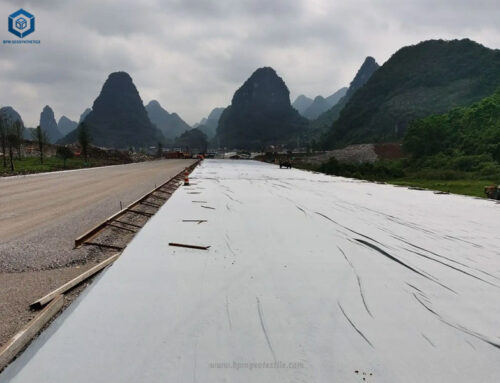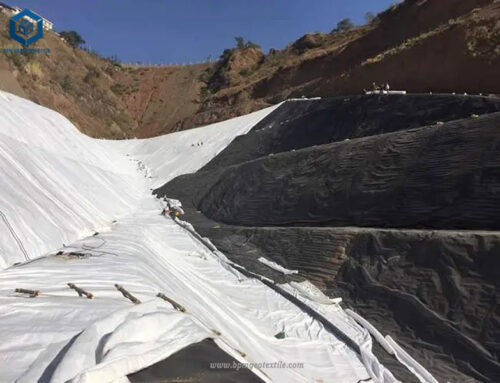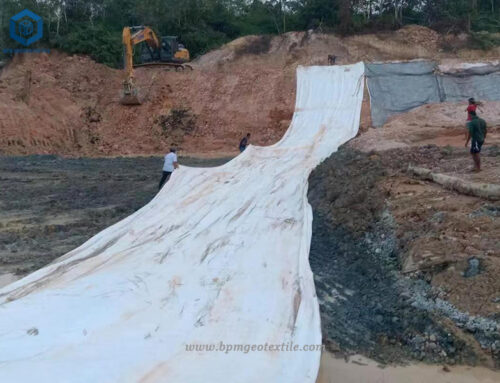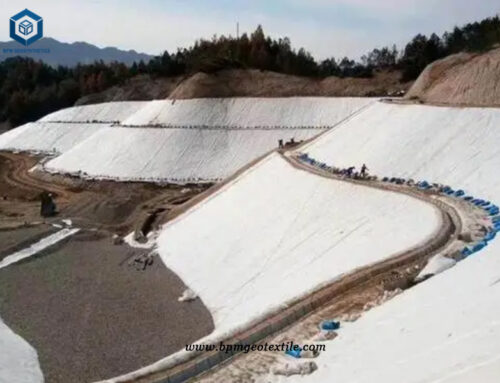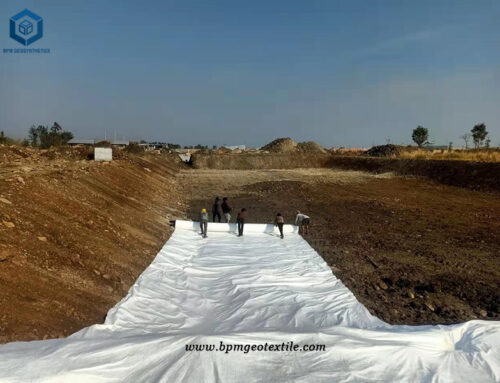Geotextile and geomembrane are geosynthetic products widely used in civil engineering projects, including waste treatment, road construction, landfill, mining and energy industries. HDPE geomembrane is an ideal anti-seepage lining material for farms, water enclosures, containment, landfills and other projects. Geotextile fabric have the functions of filtration, drainage, separation, protection and reinforcement. Generally speaking, geotextiles can be divided into woven geotextiles and non-woven geotextiles. Among them, non-woven geotextiles are often used in landfill projects to protect HDPE geomembrane linings from being punctured and damaged. Filament polyester geotextile is made of polyester long fibers that are networked and consolidated, and have a three-dimensional structure. It is a new type of material in geotechnical engineering. In addition to good tensile strength and puncture resistance mechanical properties, filament polyester geotextile also has good drainage capacity, acid and alkali resistance and anti-aging properties.
Issue
San Diego faces a growing problem of solid waste management. According to the survey, the amount of local garbage has exploded in recent years. These problems can be attributed to the explosion in consumption of many commodities, including food packaging, caused by high population density, as well as the increased use of various single-use items. Packaging materials also often contain materials that are harmful to the environment. If these wastes are not managed effectively, densely populated urban areas will face a growing waste problem. With a growing population, rising per capita consumption and increasing urbanization, Chile faces two major problems in waste management. One is the rapid increase in the amount of waste generated; the other is the change in the composition of waste.
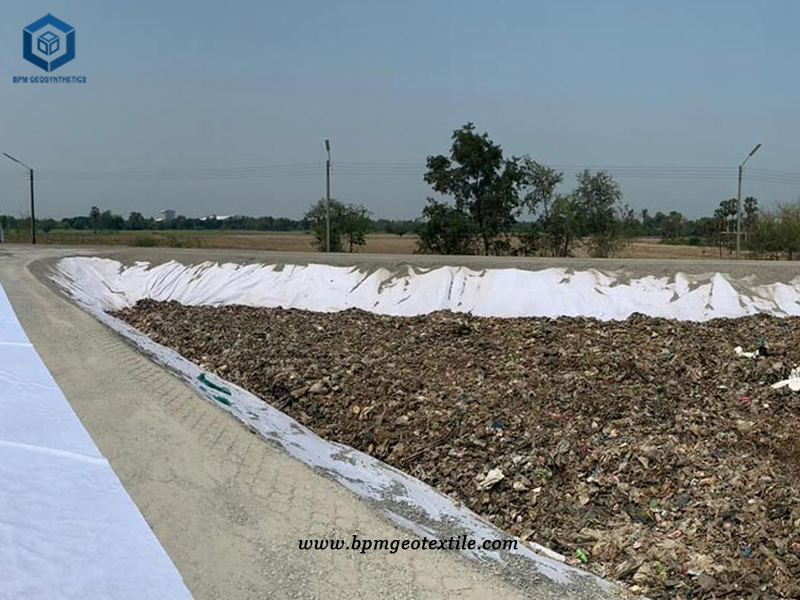
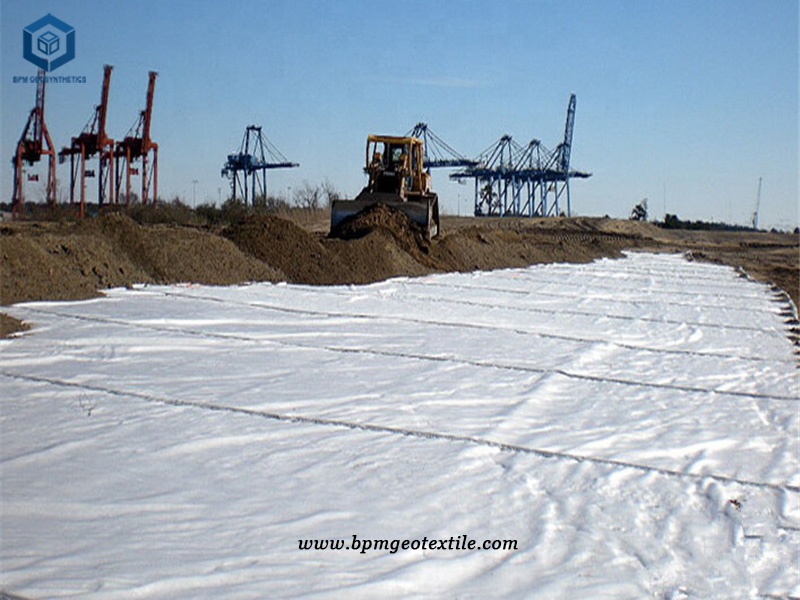
Solution
The landfill project involves a centralized waste site using the sanitary landfill method, popular for its low cost and hygiene. Layered landfilling reduces pollution by alternating garbage with loess layers.
A Chilean client wanted a cost-effective, eco-friendly landfill that also looked good. Geosynthetics support vegetation growth and repurpose landfill areas. We suggested HDPE geomembranes and polyester geotextiles to the client, showing examples of our work.
Our BPM engineer recommended 500g/m2 filament polyester geotextile and 1.0mm HDPE geomembrane to strengthen soil and increase tensile strength. After sending free samples, the client had them tested in Chile, confirming our product quality. We produced 50,000 square meters of materials after discussing details and receiving payment. The HDPE geomembrane prevents leaks, while the polyester geotextile protects it and filters water, isolating waste from soil and groundwater. These products are easy to transport, simple to install, and inexpensive, making them crucial for landfill projects.
The advantages of filament polyester geotextile in Landfill
Polyester filament geotextile is made by forming and consolidating polyester filaments into a 3D structure. It’s a new material for geotechnical and civil engineering, offering strength, drainage, elongation, and chemical resistance. With various pore sizes and good permeability, it’s lightweight, durable, easy to install, and resistant to corrosion.
Combining HDPE geomembrane with polyester filament geotextile provides excellent airtightness for landfills. The HDPE inner lining ensures water and air impermeability, blocking flies, bacteria, and garbage odors while preventing external water infiltration and groundwater pollution.
HDPE geomembrane and polyester filament geotextile have long lifespans as landfill sealing membranes. Buried underground, they last over 50 years; even exposed to the elements, they endure for more than a decade.
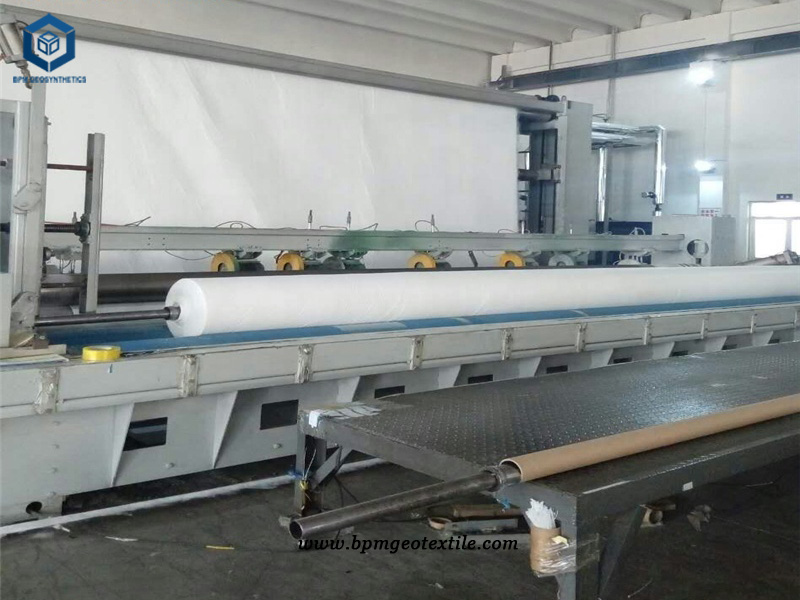
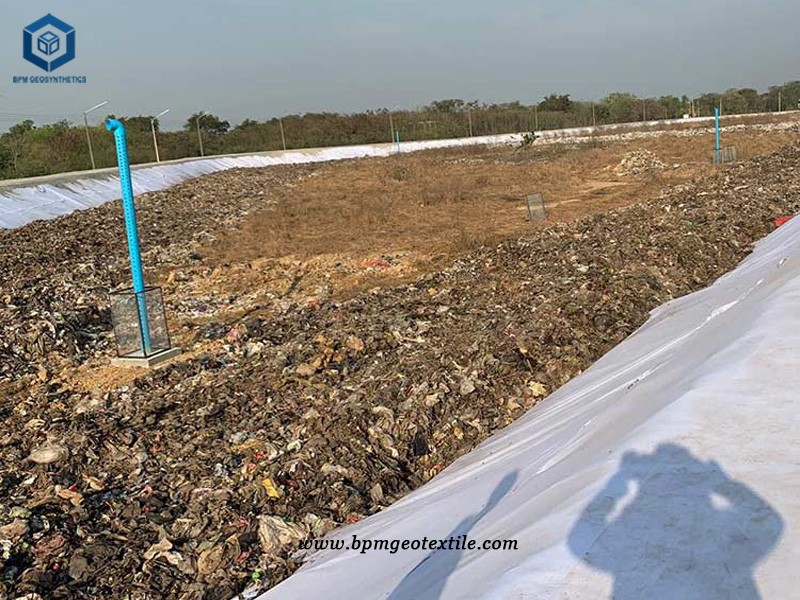
Application range of filament geotextiles
- Increase the stability of gravel slope and reinforced soil to prevent soil erosion and freezing damage of soil at low temperature
- Isolation layer between artificial soil filling, rockfill or material field and foundation, isolation between different frozen soil layers, back filtration and reinforcement
- The filter layer around the drainage underdrain or around the gravel drainage underdrain
- Vertical or horizontal drainage inside the earth dam, buried in the soil to dissipate pore water pressure
- Roads (including temporary roads), railways, embankments, airports and other projects to strengthen weak foundations
The laying process of geotextiles
Equipment for laying geotextiles shouldn’t be used directly on already-laid material. Don’t lay out too many rolls to exceed sewing range. All exposed edges must be weighted immediately to prevent wind from lifting them. Strong winds may blow away geotextiles, so avoid laying them during such conditions. When placing on slopes, control the unrolling to protect underlying layers. Cut geotextiles with a hook knife carefully to avoid damage. Laying methods should prevent folding or wrinkling of the geotextile. Fix any issues that cause wrinkling or folding. Protect laid geotextile from construction machinery damage. Inspect for foreign objects, wear, or bad seams and repair as needed.
Specification of Geotextile and Geomembrane for Landfill Project in Chile
- Construction site – Santiago, Chile
- Products used – 500g/㎡ filament polyester geotextile 1.0mm, HDPE geomembrane
- Application project – Landfill Project
About BPM
BPM manufactures and wholesales many types of effective and states of the art geotextile, geomembrane, and other geosynthetics to over 100 countries.
BPM is not only manufacturing best quality geosynthetic products but also providing professional design and installation service. OEM, ODM, custom development and fabrication are also available. If you have any questions or inquiries, please fill and submit the following form, we will reply as soon as possible.

